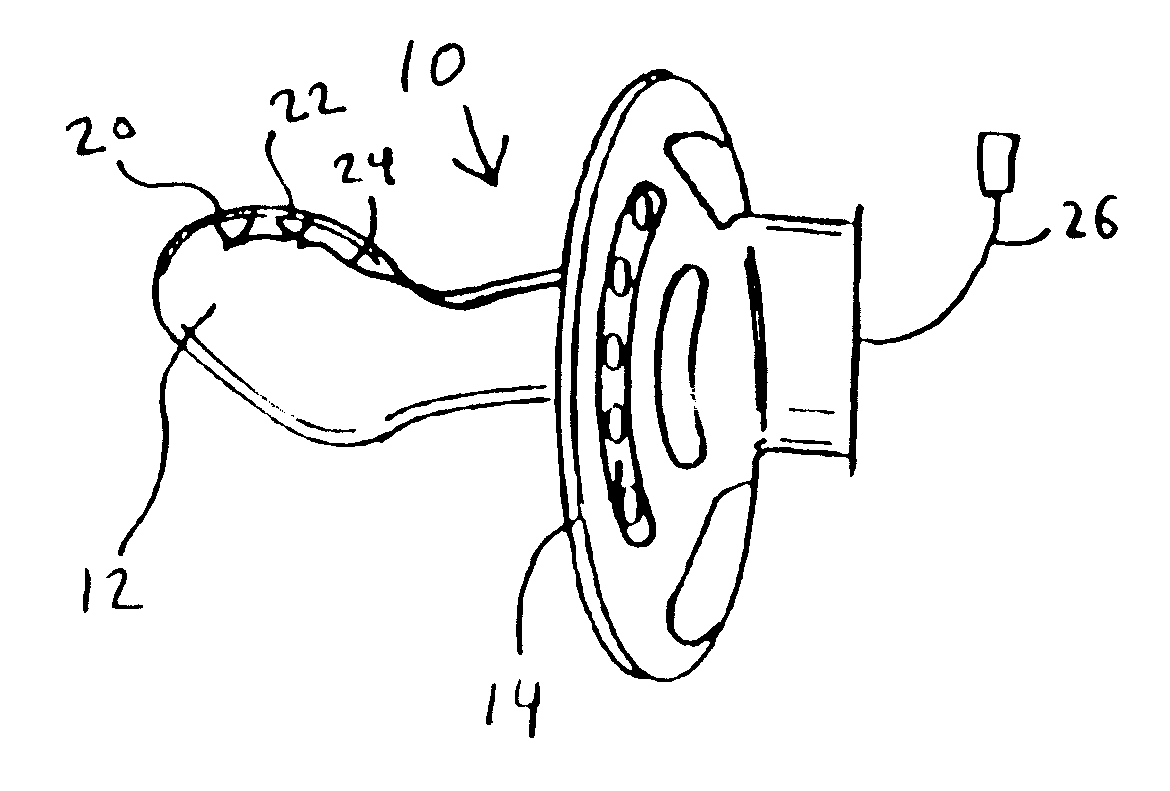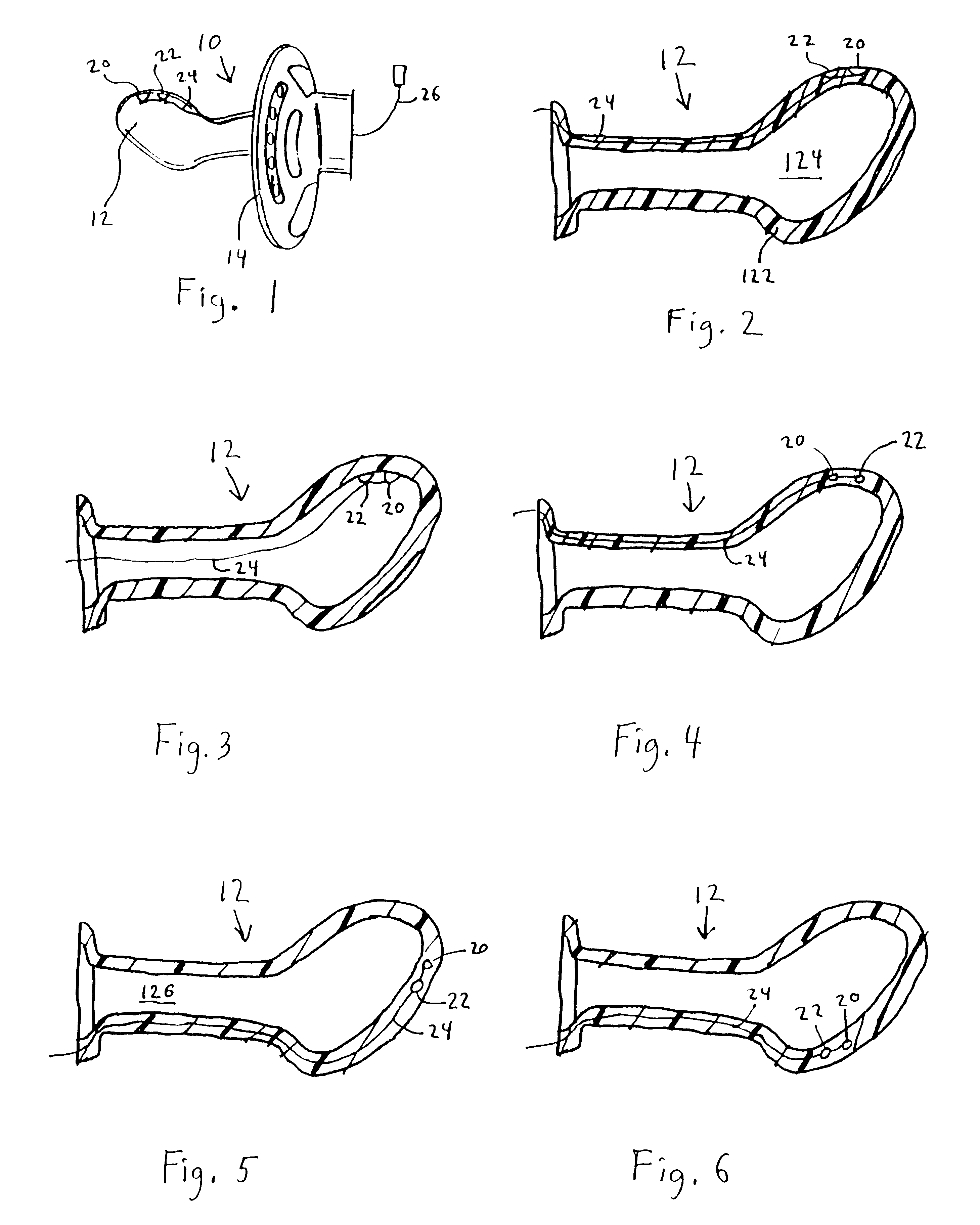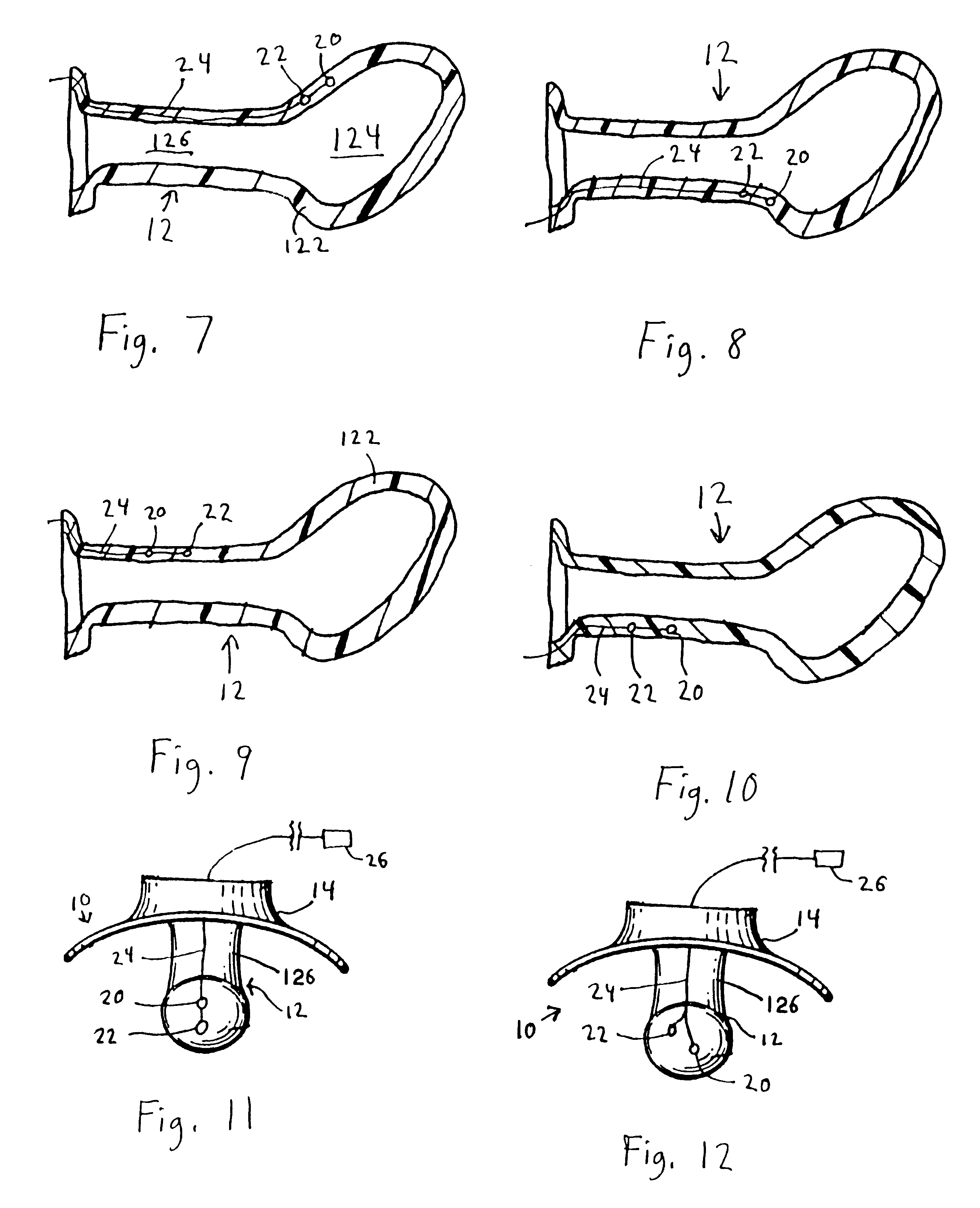Pacifier pulse oximeter sensor
a pulse oximeter and sensor technology, applied in the field of pacifier pulse oximeter sensor, can solve the problems of ineffective techniques, not everyone has the equipment available to place transilluminating pulse oximeters, and is more likely to be restless and easily agitated, so as to improve pulse oximetry readings, improve care quality, and reduce power to function
- Summary
- Abstract
- Description
- Claims
- Application Information
AI Technical Summary
Benefits of technology
Problems solved by technology
Method used
Image
Examples
Embodiment Construction
FIGS. 1-18 illustrate a preferred embodiment and alternative component arrangements of the pacifier oximeter sensor assembly. The assembly preferably includes a pacifier 10, pulse oximeter sensor elements 20, 22, and wiring 24.
The pacifier 10 preferably includes a nipple (or baglet) 12 and a shield (or guard) 14. The nipple 12 may be a variety of shapes in addition to those shown in FIGS. 1-18 that will allow the subject to apply a suction force to the nipple 12. Exemplary shapes for the nipple 12 include orthodontic, bottle nipple, spherical, and thumb shaped. The nipple 12 preferably is a flexible material typically used to make pacifiers and baby bottle nipples such as polypropylene, polyvinyl chloride, silicones, epoxies, polyester, thermoplastics, rubber, or similar flexible material. Preferably, the material used to make the nipple 12 will be at least partially translucent to allow light to pass through in the area of the pulse oximeter sensor elements 20, 22. Preferably, the ...
PUM
 Login to View More
Login to View More Abstract
Description
Claims
Application Information
 Login to View More
Login to View More - R&D
- Intellectual Property
- Life Sciences
- Materials
- Tech Scout
- Unparalleled Data Quality
- Higher Quality Content
- 60% Fewer Hallucinations
Browse by: Latest US Patents, China's latest patents, Technical Efficacy Thesaurus, Application Domain, Technology Topic, Popular Technical Reports.
© 2025 PatSnap. All rights reserved.Legal|Privacy policy|Modern Slavery Act Transparency Statement|Sitemap|About US| Contact US: help@patsnap.com



